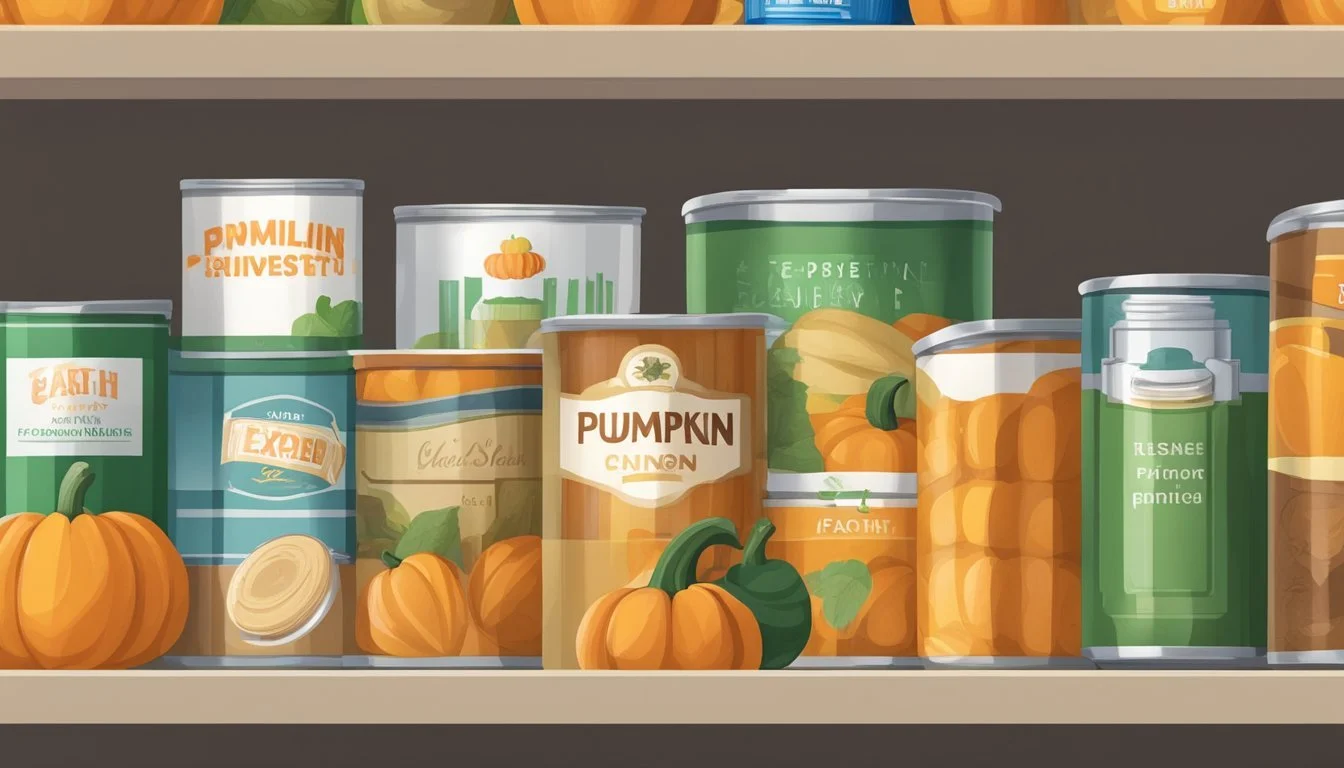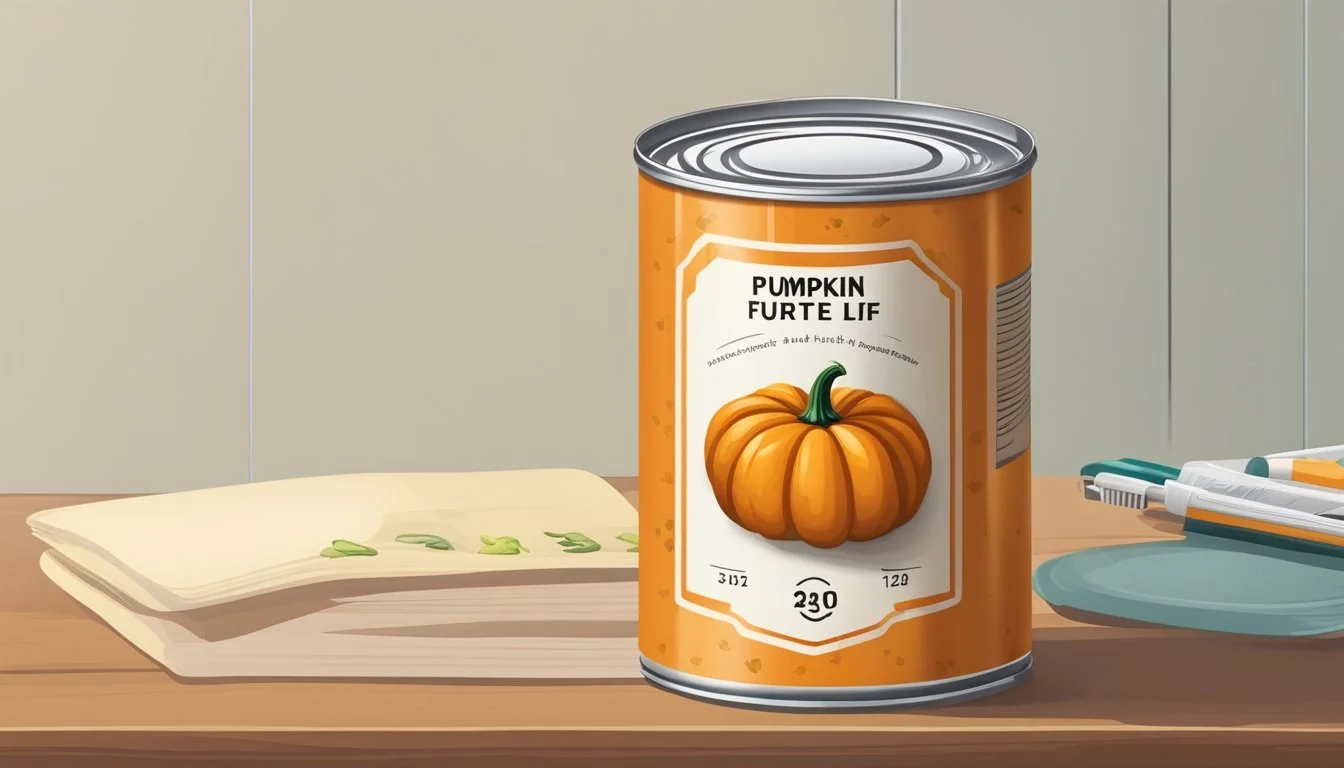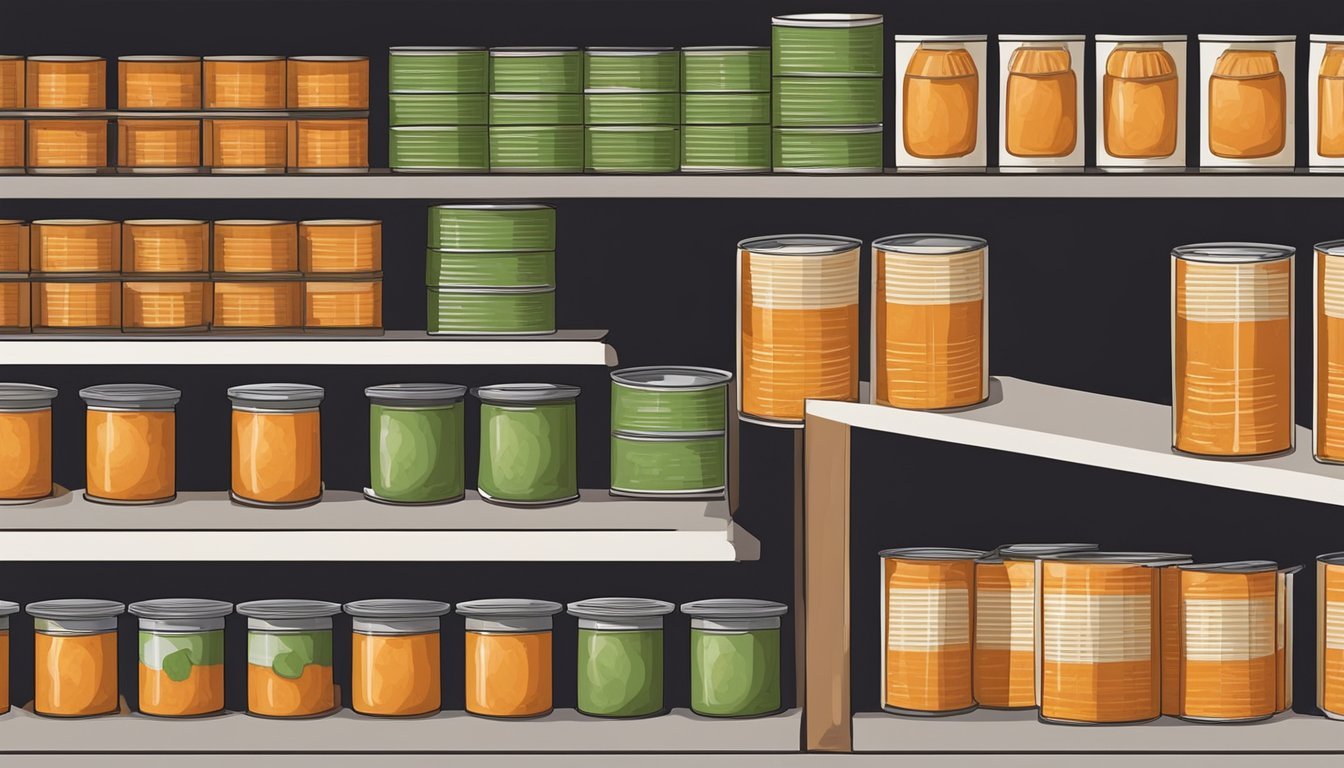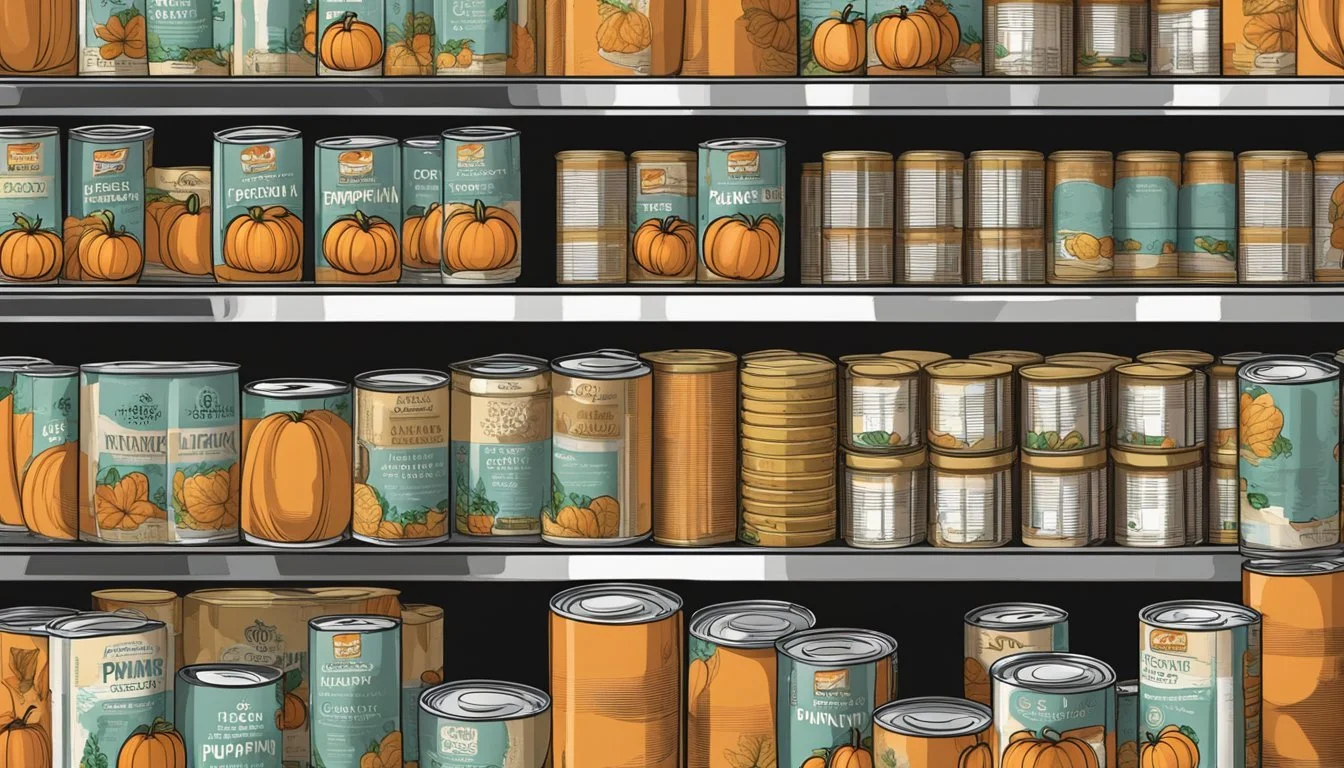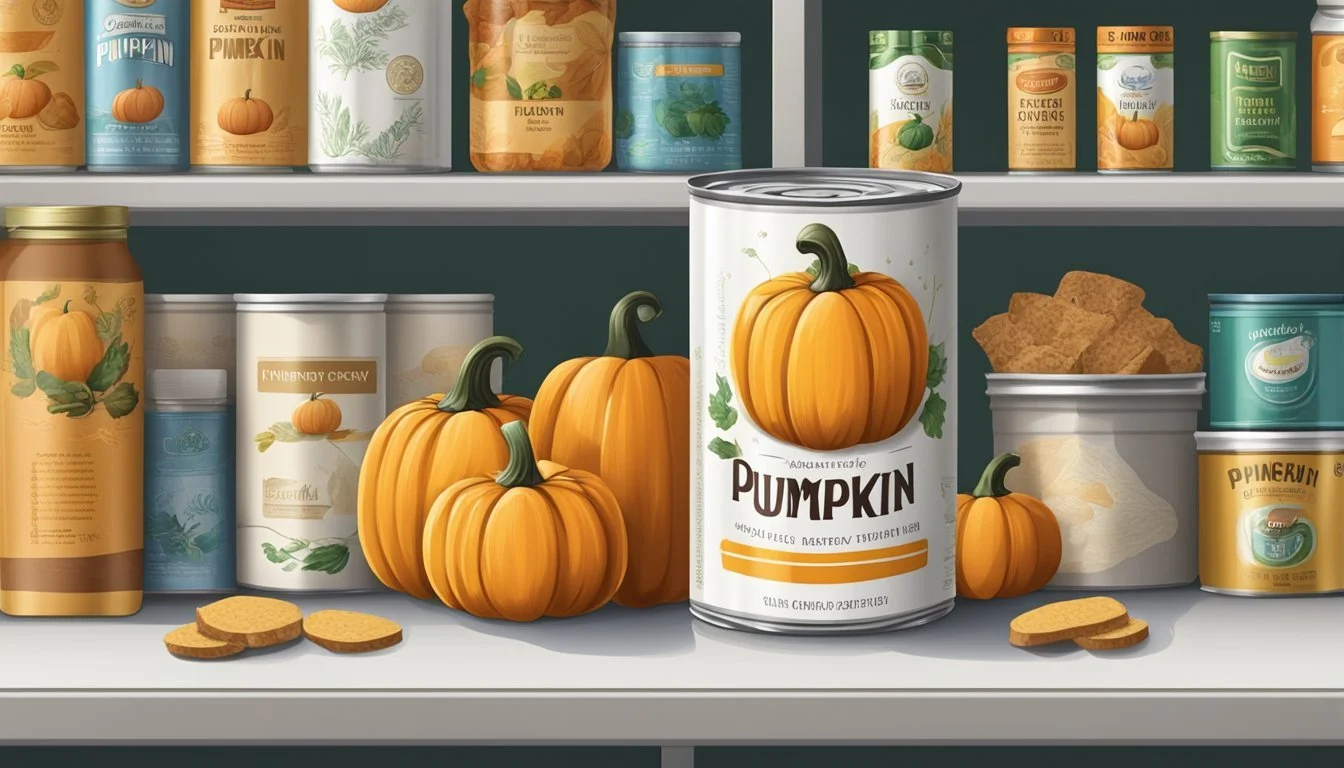How Long Does Canned Pumpkin Last?
Shelf Life Explained
Canned pumpkin (how long does canned pumpkin last?) is a convenient and versatile ingredient commonly used in baking and cooking, offering the rich flavors of pumpkin without the need for preparation and cooking. Its shelf life is a matter of interest for consumers who wish to maintain both the quality and safety of the product. Unopened canned pumpkin, when stored properly at room temperature in a cool, dry place, typically maintains its best quality for about 3 to 5 years. It's worth noting that while the "best by" date on canned goods is an indicator of optimal quality, manufacturers often err on the side of caution, and such products can remain safe and suitable for consumption beyond that timeframe if the integrity of the can and the product has not been compromised.
Once a can of pumpkin is opened, its shelf life considerably diminishes due to the exposure to air and potential contaminants. To ensure food safety and quality, opened canned pumpkin should be refrigerated and used within approximately 5 to 7 days. It is advisable to store the unused portion in an airtight container to prevent the growth of mold and bacteria and to maintain its flavor and texture.
Consumers can rely on sensory clues such as color, texture, and smell to determine the freshness of canned pumpkin. It's crucial to discard any canned pumpkin that shows signs of spoilage, such as an off odor, an unusual appearance, or mold, as these are indicators that the product is no longer safe for consumption.
Understanding Canned Pumpkin
When it comes to canned pumpkin, two fundamental factors affecting its longevity and quality are the canning process and the inclusion of nutrition and preservatives. Consumers rely on these aspects to ensure they get a product with retained flavor and quality.
Canning Process
The canning process is a method of food preservation that extends the shelf life of pumpkin puree, enabling it to last on store shelves and in pantries. Pumpkin, when canned, undergoes a heating process that eliminates microbes and seals the puree in an airtight environment. This process is vital for maintaining the quality and flavor of the pumpkin over time.
Nutrition and Preservatives
Canned pumpkin is known for its nutritional value, with the puree containing essential vitamins, minerals, and fiber. In the case of canned pumpkin, preservatives may or may not be added. When they are, they serve to prolong freshness and prevent spoilage. However, many canned pumpkin products rely solely on the canning process itself to preserve the pumpkin, avoiding the need for additional preservatives.
Shelf Life and Expiration
When it comes to canned pumpkin, understanding shelf life and how to determine expiration is key to enjoying the product at its best quality.
Shelf Life of Unopened Canned Pumpkin
The shelf life of unopened canned pumpkin is generally estimated to range between 3 to 5 years if stored properly. Manufacturers often provide a best by, best before, or best when used by date to indicate the period during which the product is expected to remain at its best quality. The United States Department of Agriculture (USDA) acknowledges that canned foods, when kept in suitable conditions, can be safe beyond these dates.
Storage Conditions: A cool, dry place like a pantry is ideal.
Manufacturer's Estimate: Some brands may specify a shelf life of up to 900 days or more.
USDA Guidelines: Echo the safety of canned goods for consumption beyond the indicated dates, provided the cans show no sign of damage or spoilage.
Determining Expiration
To determine if canned pumpkin is still good to use post the given expiration date, one should:
Inspect the Can: Ensure there are no dents, rust, or swelling.
Check the Quality: Upon opening, the color, smell, and texture should not have noticeably deteriorated.
Observe Safety: If the appearance or odor is off, it's best to discard the product to avoid potential foodborne illness.
It’s essential to understand while canned pumpkin can remain safe beyond the expiration date, its nutritional value, and flavor quality may diminish over time.
Storage Guidelines
For canned pumpkin to maintain its best quality, specific storage conditions must be met to prolong its shelf life.
Optimal Storage Conditions
Unopened canned pumpkin should be stored in a cool, dry area away from direct sunlight and heat sources. The ideal storage temperature is below room temperature, which generally ranges from 68 to 77 degrees Fahrenheit. Exposure to extreme temperatures can negatively affect the product's quality and safety.
COOL: Below 77°F (25°C)
DRY: Low humidity environment
DARK: Away from direct sunlight
Refrigerating and Freezing Options
Once opened, canned pumpkin must be transferred to an airtight container and refrigerated promptly to prevent spoilage. Properly refrigerated, it can remain safe for consumption for 5 to 7 days.
REFRIGERATE: 5 to 7 days in an airtight container
FREEZE: Up to 3 months for optimal quality
FREEZING INSTRUCTIONS:
Transfer to an airtight container
Label with the date before freezing
Thaw overnight in the refrigerator before use
For those who have commercially packaged canned pumpkin, it's important to note that these guidelines apply to ensure food safety and quality. Canned pumpkin should not be refrigerated or frozen while still sealed in its original can.
Signs of Spoilage
When assessing canned pumpkin for spoilage, one must inspect for specific signs that indicate whether the product is no longer safe to consume. These indicators include changes to the visual appearance and texture, and shifts in smell and taste that are not consistent with fresh canned pumpkin.
Visual and Texture Changes
Color: Any discoloration or fading of the pumpkin's natural creamy orange hue suggests spoilage.
Appearance: Signs of mold growth or a slimy texture are clear indicators that canned pumpkin should be discarded.
Can Integrity: Cans that are leaking, rusting, bulging, or severely dented can compromise the contents and should not be used.
Smell and Taste Indicators
Off Odor: An unusual or unpleasant odor emanating from the canned pumpkin is a reliable sign of spoilage.
Taste: Should the product have an off taste or if there is any doubt after the initial smell test, it is best to err on the side of caution and dispose of the pumpkin.
Safe Consumption
When storing and using canned pumpkin, it's crucial to prioritize safety. Knowing when to use or discard cans can prevent foodborne illnesses, while understanding food safety concerns ensures one makes informed decisions on consumption.
When to Use or Discard
Canned pumpkin, if unopened and stored properly, is generally safe to use for 3 to 5 years past its labeled expiration date. One should inspect the can before usage; any signs of damage, such as severely dented, rusted, or bulging cans, should lead to immediate disposal. The contents, once opened, should exhibit a normal appearance and odor. If any alteration in color, smell, or texture is noticed, the product should be discarded.
Inspect: Check for can integrity.
Smell and Look: Assess the pumpkin for off odors and colors.
Discard: If abnormalities are found.
Food Safety Concerns
Food safety is paramount when dealing with canned goods. Canned pumpkin is no exception. If an unopened can has any compromise in its seal, such as if air has entered, it poses a risk and should not be consumed. When opened, canned pumpkin should be transferred to a sealed container if not used immediately and can last for 5 to 7 days in the refrigerator.
Seal: Ensure cans are air-tight.
Storage: Refrigerate promptly in a sealed container.
Use: Consume within recommended time frames to ensure safety.
Utilizing Canned Pumpkin
Canned pumpkin is a versatile ingredient that can be used in a variety of recipes, and proper thawing and preparation are key to its use in cooking and baking.
Culinary Uses
Canned pumpkin, known for its rich flavor and smooth texture, serves as a staple ingredient in a myriad of dishes. For baking, it is essential in creating the beloved pumpkin pie, a traditional dessert particularly popular during the fall season. It's also commonly incorporated into cakes, pancakes, and even smoothies for a nutritious boost. In cooking, canned pumpkin adds depth to soups and stews, offering a creamy consistency and a subtle sweetness that enhances the overall flavor profile.
Thawing and Preparation Methods
When it comes to thawing canned pumpkin, if it has been previously frozen, one should transfer the amount needed from the freezer to the refrigerator and allow it to thaw overnight. If a quicker method is required, placing the pumpkin in a leak-proof plastic bag and submerging it in cold water can expedite the process. For immediate use, the microwave serves as a reliable tool; heat the pumpkin in a microwave-safe container at defrost setting, stirring occasionally until it's evenly thawed. It is important to ensure that the pumpkin maintains its texture during thawing for optimal results in recipes.
FAQs
How long can canned pumpkin last?
Canned pumpkin, a low-acid food, typically has a shelf life ranging from 2 to 5 years when unopened and stored in a cool, dry place. Once opened, pumpkin should be used within 5 to 7 days if refrigerated promptly in an airtight plastic container.
What are the ideal storage conditions?
A cool, dry environment away from temperature fluctuations is optimal for preserving the shelf life of canned pumpkin.
Does the brand of canned pumpkin matter?
While the process of canning pumpkin is standard, different brands may have varying "best by" dates; it is recommended to adhere to these dates for best quality.
Can I freeze canned pumpkin?
Yes, canned pumpkin can be frozen in an airtight container for up to 3 months. Texture may change once defrosted, so it's best suited for cooking or baking in items like pumpkin pie filling or cookies.
How is canned pumpkin used as baby food?
Canned pumpkin can be mixed into oatmeal or served alone as a baby food. Ensure it's plain pumpkin without additives and check expiry dates carefully.
Is fresh pumpkin better than canned pumpkin?
Fresh pumpkin may have a shorter shelf life and requires proper storage. Canned pumpkin offers convenience and a longer shelf life, making it a reliable option for autumn and beyond.

